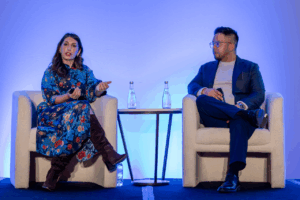If the ongoing pandemic has demonstrated anything, it’s that pre-packaged pre-COVID consumer data no longer applies.
“The world has completely changed and there are a lot of stale data sets out there,” said Dominic Joseph, CEO of search intelligence company Captify, which released a self-serve insights, planning and activation platform on Wednesday called Sense.
Several of the features, including a tool that helps brands map the consumer journey using search data, were developed in partnership with Universal McCann, which is now using those features in an exclusive capacity for clients in the US and the UK.
Rather than cookies, Sense is powered by first-party search data. Captify captures and analyzes more than 35 billion searches per month on around 2 billion devices.
The real-time and intent-driven nature of search can help UM make more informed strategic planning decisions for its brand clients, said Hamish Kinniburgh, the agency’s global chief strategy officer. That was a growing priority before the pandemic, he said, and has only become more important since.
“This is the sort of behavioral data we used to get from surveys, but there’s a richness we can get from an audience creation and strategy perspective when the data is real time and we can put it at the fingertips of our planning and strategy teams,” Kinniburgh said.
Just think about being an agency and trying, for example, to do work for a travel brand this past year using data from before COVID-19, Joseph said.
“When the outbreak hit, all of the data sets they were using were suddenly out of date,” he said. “I’m not sure there’s ever been a stronger case for the fact that brands need real time, granular data.”
The idea behind Sense is to quickly suss out trends in consumer behavior so that they’re useful both as a truth set for strategic planning purposes and also actionable from a campaign execution perspective.
The platform allows buyers to run customizable queries on search data, a bit like they might do using Google Trends. They can then do their own analysis and create audiences based on the trends they uncover.
Captify has pipes into most of the major supply-side platforms, where audiences are matched with inventory and associated with a deal ID so that advertisers can buy the media through their DSP of choice.
“If you’re a strategist, you’re not just looking to map the journey, you’re also looking for the trigger before the trigger… so that you can give a brand a competitive advantage and get ahead of others that are competing along the more obvious journey,” Kinniburgh said.
For example, Sense was able to discern a big surge in intent for first-time mortgage intenders in October related to a 301% decrease in searches for “one-bed apartments in NY” and a concurrent increase in searches for properties with gardens on Long Island. These searches were associated with young professionals who might otherwise not have been part of a media strategy targeting mortgages in suburban locations.
“We’re not just trying to understand what a person does when they’re on a journey to buy a pair of sneakers, for example,” Kinniburgh said. “We want the overall picture, the big picture, because that is where you can find opportunities worth exploring.”
Later this year, Captify and UM are planning to develop a feature that’ll allow brands to onboard first-party CRM data and overlay it with search-related insights.














